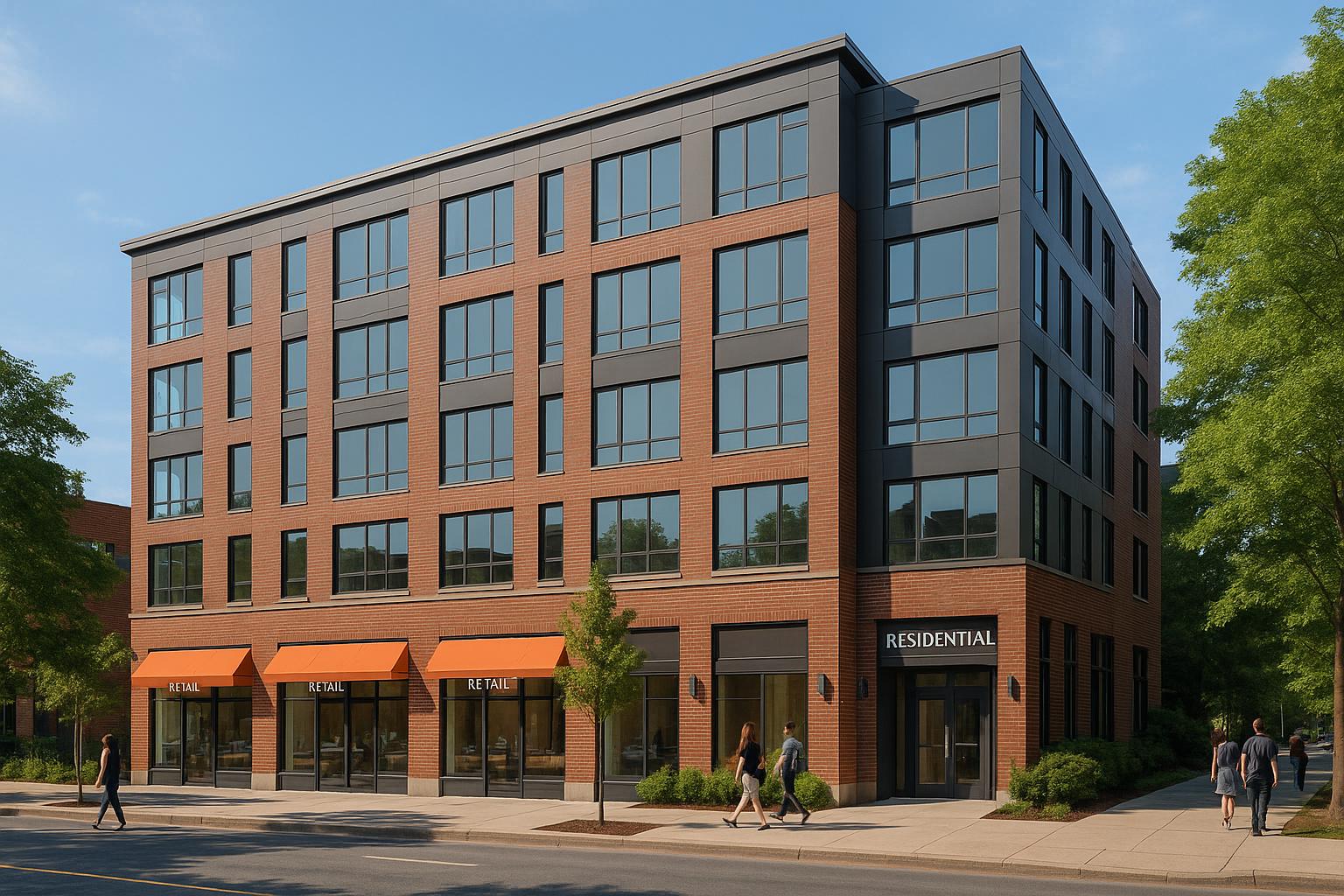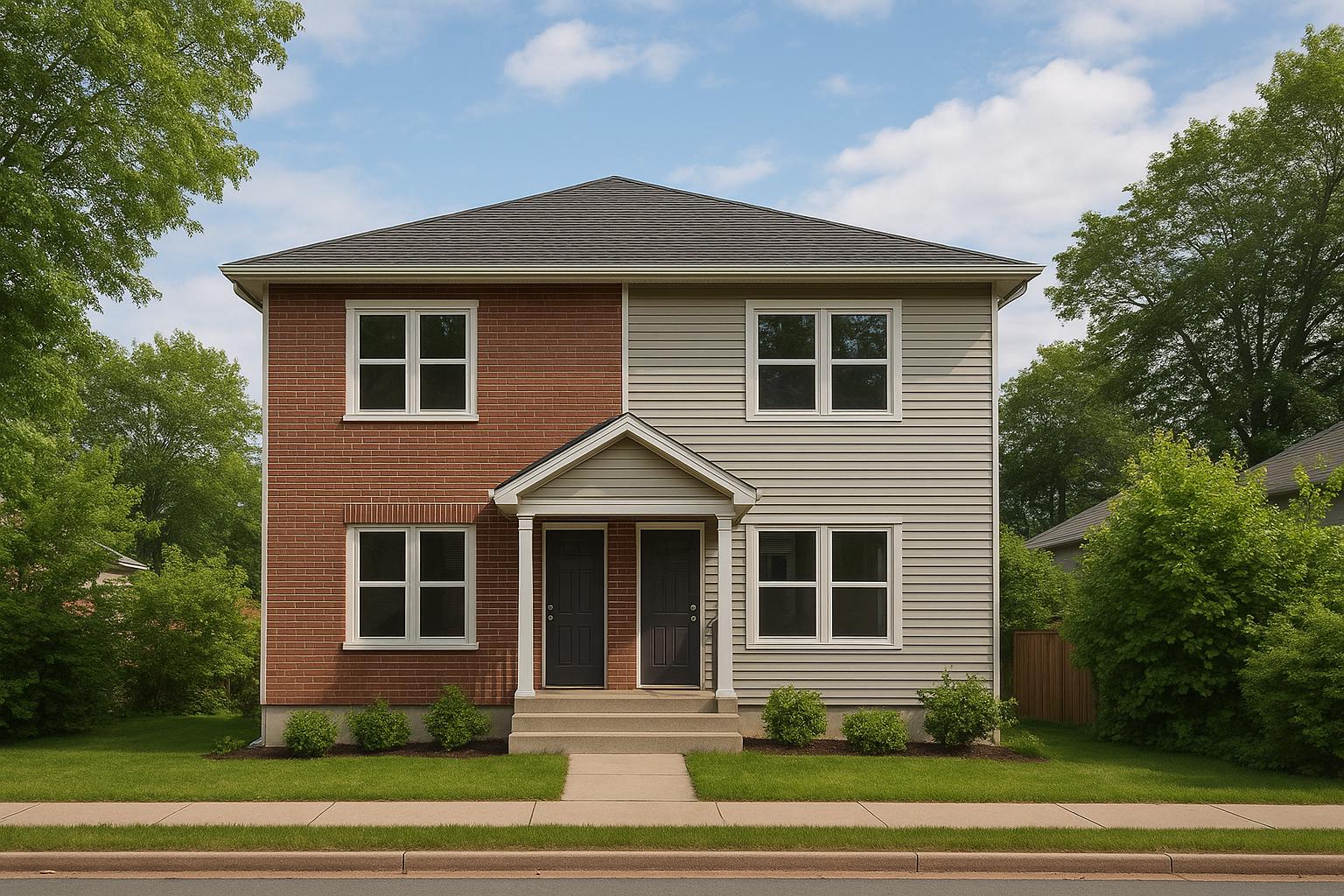When planning multi-unit developments in Halifax, the approval process you choose - as-of-right or variance - can significantly impact your timeline. Here's the key difference:
- As-of-Right: If your project fully complies with zoning rules (e.g., height, setbacks, density), this is the fastest and most predictable option. It skips public hearings and council reviews, allowing construction to begin sooner.
- Variance: If your project doesn't meet zoning rules (e.g., needs higher building heights or reduced setbacks), this route offers flexibility but involves more steps. Expect public notifications, committee reviews, and potential appeals, which can add months of delays.
Quick Comparison:
| Criteria | As-of-Right | Variance |
|---|---|---|
| Compliance | Fully meets zoning rules | Deviates from zoning rules |
| Timeline | Faster | Longer due to extra reviews |
| Public Involvement | Not required | Required |
| Approval Certainty | High | Less predictable |
For faster approvals and fewer delays, aim for as-of-right compliance. Variances should only be pursued if deviations from zoning rules are unavoidable.
How to Quickly Look Up Zoning in Halifax, Nova Scotia
As-of-Right Approval: Fast Track for Compliant Projects
As-of-right approval is the fastest way to get multi-unit developments off the ground in Halifax - provided they fully comply with the city's zoning regulations. This process removes the guesswork and delays tied to discretionary approvals, offering a more predictable outcome.
The Centre Plan was specifically crafted to make more projects eligible for this streamlined path. By updating development rules, the plan reduces the need for site-specific changes, giving property owners a quicker route to approval [2].
Projects That Qualify for As-of-Right Approval
To qualify for as-of-right approval, your project must strictly adhere to all zoning regulations outlined in the Land Use By-law. This includes:
- Building height limits: Your building must stay within the height restrictions for your zone. For example, if your zone allows four storeys, even a slight overage will disqualify your project.
- Setbacks: The required distances from property lines, streets, and neighbouring structures must be met exactly.
- Density limits: Each zone has a cap on the number of units allowed. Exceeding this limit means your project won’t qualify for this approval process.
- Parking requirements: The by-law specifies how many parking spaces are needed, and these requirements must be met in full.
- Lot coverage: There are limits on how much of your lot can be occupied by buildings. Your project must remain within these boundaries.
For developments in Centre Plan Package B zones, this system is designed so that most projects only need to go through the standard development and construction permit process [2]. This eliminates the need for the more complex site plan approval process, saving both time and effort.
Application Steps and Timeline
The as-of-right approval process is straightforward, cutting out many of the delays associated with discretionary approvals. Full compliance means no public consultation or council review is required [2].
The process starts with submitting a development permit application to Halifax Regional Municipality. Your submission should include detailed drawings, site plans, and engineering reports that demonstrate your project meets all zoning requirements.
The next step is the staff review, where municipal planners and engineers carefully evaluate your application for compliance with the regulations.
One of the biggest time-savers in this process is the absence of public hearings. Unlike variance applications, which involve community input and council decisions, as-of-right projects skip this step entirely. Instead, they move directly through technical review.
Since this process focuses solely on verifying compliance, it’s much faster than routes requiring discretionary approvals. While timelines can vary depending on the complexity of your application and municipal workload, as-of-right approvals generally allow for more efficient construction planning. The predictability of this process is especially helpful when arranging project financing and scheduling.
With as-of-right approval, there’s no room for uncertainty. If your project meets all zoning requirements, approval is based purely on technical verification. This clarity and speed make it an invaluable option for developers looking to stay on schedule and budget.
Variance Approval: More Options but Longer Wait Times
If your multi-unit project in Halifax doesn’t fit the city’s zoning requirements, you might need to apply for a variance. While this process can offer some flexibility - especially for unique sites or creative designs - it does come with longer wait times compared to as-of-right approvals.
The purpose of the variance process is to ease strict zoning rules for minor deviations. Since approval is discretionary, your application will go through a detailed review by municipal staff, committees, and sometimes even the council. This is quite different from as-of-right approvals, where meeting all zoning requirements ensures a quick permit.
For anyone working under the Centre Plan, understanding how the variance process works is just as important as knowing the ins and outs of as-of-right approvals.
When You Might Need a Variance
You’ll need to apply for a variance if your design has small deviations that don’t meet zoning rules. Some common reasons for variance requests in Halifax’s multi-unit developments include:
- Setback issues: When lot size or shape makes it impossible to meet setback requirements.
- Height adjustments: If your design slightly exceeds the height limits.
- Parking constraints: Especially on urban infill sites where space is tight.
- Density concerns: When your project proposes more units than normally allowed.
- Stepback requirements: These rules, which require upper floors to be recessed from the street, can sometimes clash with the project’s design or feasibility.
Each of these scenarios requires additional steps and approvals, which can extend the timeline.
Why Variances Take Longer
The variance process involves more stages of review compared to the straightforward as-of-right approvals. One key difference is the requirement for public notification. Nearby property owners must be informed of your application, and there’s a waiting period for their feedback.
Municipal staff will also conduct a detailed review of your application, assessing it against planning policies and its potential impact on the neighbourhood. This is a more thorough process than the simple compliance check used for as-of-right projects.
Committee reviews, which follow a set schedule, can add further delays. In some cases, a public hearing is required, giving community members the chance to express their opinions. Council may request additional information or design changes at this stage, which can further slow things down. After a committee decision, there’s also an appeal period, which could delay final approval even more.
Because variance approvals are discretionary, outcomes can be unpredictable. Committees might suggest design changes, impose extra conditions, or even reject the application altogether. This added uncertainty is something to keep in mind when considering the variance route.
sbb-itb-16b8a48
Timeline Comparison: As-of-Right vs Variance
As-of-right applications skip council reviews, allowing projects to move directly into the permit process. On the other hand, variance applications involve additional discretionary reviews, which naturally extend the timeline [3].
Approval Process Comparison Chart
| Process Step | As-of-Right Path | Variance Path |
|---|---|---|
| Council Decision | Not required | May be required |
| Review Process | Streamlined compliance check | Detailed, discretionary review |
| Overall Timeline | Faster and more predictable | Longer due to extra review steps |
This table breaks down the key differences in timing between the two paths.
Quicker as-of-right approvals mean construction can begin sooner, leading to earlier rental income. In contrast, the variance process adds delays, which can push back completion and reduce overall profitability.
Project Examples: Which Path Works Better
These examples highlight how different approval paths can influence construction timelines and rental income potential. They provide a clear picture of the timeline and financial impacts discussed earlier.
Example 1: Standard Fourplex (As-of-Right Path)
A standard fourplex project that fully complies with Centre Plan requirements benefits from a straightforward approval process. This "as-of-right" development skips the need for council involvement, as it adheres to all zoning regulations. Most developments in Halifax fall under this category, offering faster approval and construction timelines, along with more predictable costs [1].
Time is money, especially for rental properties. For a fourplex generating $1,950 per unit monthly, every month of delay means $7,800 in lost rental income. The as-of-right path helps avoid these unnecessary losses by keeping the process efficient.
Example 2: Setback Issue Project (Variance Path)
On the other hand, projects requiring variances - like a minor setback adjustment - face a more complicated approval process. These projects often involve extra steps such as public hearings, consultations with neighbours, and the potential for appeals, all of which can significantly extend timelines and add uncertainty.
For the same fourplex, a three-month delay caused by the variance process results in $23,400 in lost rental income. When delays stretch from 8 to over 18 months, as they often do with fragmented planning approaches, budget overruns can soar by 30–60%.
Working with integrated builders can help reduce these challenges. By addressing potential variance issues during the planning stage, they can often adjust designs to meet as-of-right requirements. Even when variances are unavoidable, their coordinated approach keeps delays to a minimum.
The difference is clear: as-of-right projects paired with integrated construction teams can start generating rental income 6–12 months sooner than variance projects that rely on less coordinated methods. The financial and time-saving advantages are undeniable.
Choosing Your Approval Path: Speed vs Flexibility
Deciding between as-of-right and variance approval means weighing the need for speed against the desire for design flexibility. Property owners should carefully align their project's goals with timelines and budget considerations.
Let’s start with the quicker option: As-of-right approval. This is the go-to path if your project complies with all Centre Plan requirements without any deviations. It offers clear timelines, reduced risk, and faster potential revenue. However, the trade-off is that you must strictly follow zoning rules, which can limit design choices or building placement.
On the other hand, variance approval comes into play when zoning exceptions are needed. While this route allows for more design flexibility, it’s not without challenges. It often involves longer approval periods, notifying property owners within 100 metres of the project, and the possibility of facing community opposition or appeals [4].
Even if variances are required, experienced professionals can help streamline the process by optimizing designs to avoid unnecessary delays. A well-coordinated approach can make navigating this path smoother and more efficient.
It’s also important to note that the variance process is governed by provincial legislation, meaning municipalities cannot modify it [4]. This makes early planning and expert advice crucial to ensuring your project stays on track.
Ultimately, successful projects often lean towards as-of-right approval for its speed, turning to variances only when greater design flexibility is absolutely essential.
FAQs
What challenges could arise when using the variance approval process under Halifax's Centre Plan?
Opting for the variance approval process under Halifax's Centre Plan can be a tricky road to navigate. This approach often involves securing multiple variances, which can mean drawn-out negotiations and a pile of paperwork. All of this can lead to delays and, inevitably, higher costs.
There’s also the chance that a variance might be denied if the project doesn’t align with the required criteria. This could mean going back to the drawing board, causing major setbacks. On top of that, objections or appeals from the community can stretch timelines even further and add an extra layer of uncertainty, making it tough to pinpoint when construction can actually start.
For property owners, these risks underline the need to carefully weigh whether the variance process is the best route for their project.
What steps can property owners take to qualify for as-of-right approval and speed up their project timelines under the Centre Plan?
To secure as-of-right approval and sidestep potential delays, property owners in Halifax must ensure their projects align with the ER3 zoning requirements. These rules cover essential aspects like height restrictions (capped at 12 metres), lot coverage (up to 60%), and specific design elements, such as having entrances that face the street and proper window placement.
Additionally, projects need to stay within the maximum allowed unit count of eight. By strictly adhering to these zoning regulations, owners can avoid the need for discretionary reviews, streamlining the approval process and enabling construction to begin sooner.
How can I avoid delays when a variance is required for a project in Halifax?
To keep your project on schedule when a variance is needed, it’s crucial to engage with Halifax’s municipal planning department early. This helps you understand the exact steps, timelines, and paperwork involved. A key requirement is submitting a detailed Construction Management Plan and ensuring all notices are handled within the required deadlines.
Clear communication is another essential piece of the puzzle. Keeping neighbours, stakeholders, and municipal officials informed can help you avoid surprises. By preparing detailed documentation and ensuring your project aligns with local regulations, you can smooth out the approval process and stick to your timeline.



